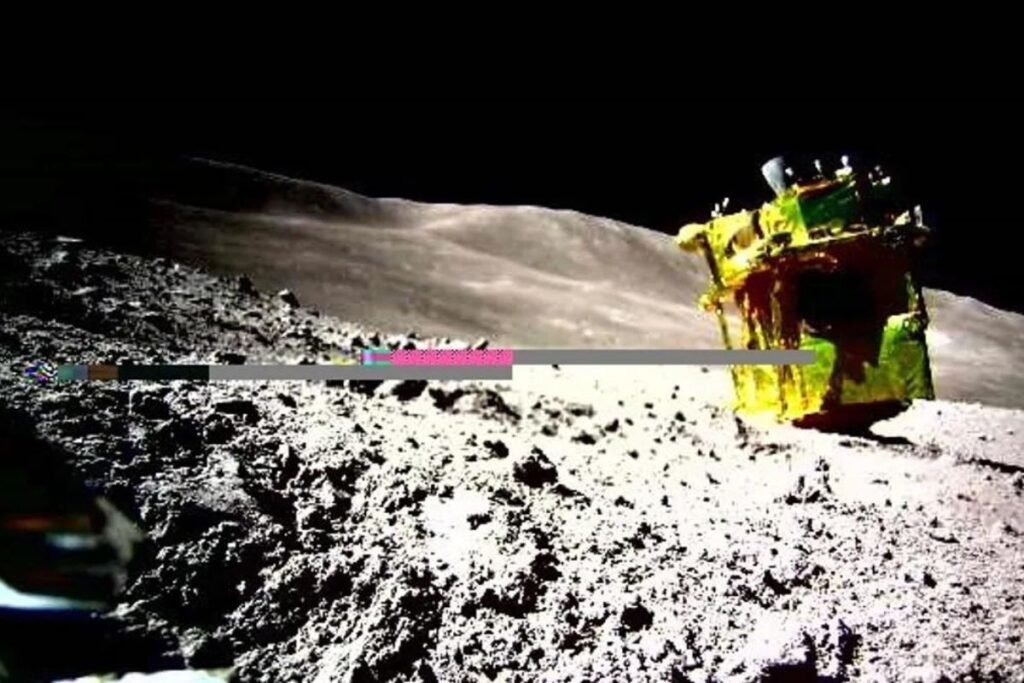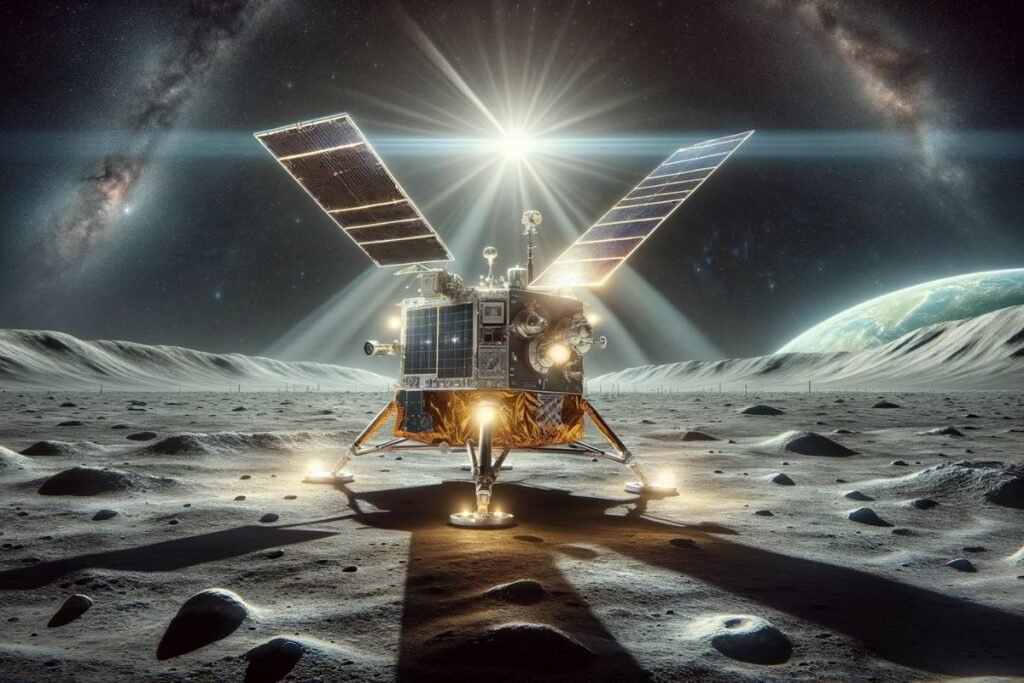Unexpected Turn Leads to Innovative Success
Japan’s Smart Lander for Investigating Moon (SLIM) faced a precarious situation when it landed upside-down on January 20th, jeopardizing its mission with solar panels aimed away from the sun. Despite the adverse landing, a change in sunlight direction enabled SLIM’s solar panels to recharge, marking a significant comeback for the probe and resuming its mission to unveil the Moon’s secrets.
SLIM’s Recovery: A Beacon of Hope

Image courtesy of the Japan Aerospace Exploration Agency (JAXA).
This incident underscores the resilience and adaptability of space missions, with JAXA’s strategic patience allowing SLIM to harness solar power once more. Although SLIM’s long-term operational capacity remains uncertain, its initial recovery offers valuable lessons on the importance of design and planning for space exploration.
Japan Joins Elite Lunar Explorers
SLIM’s successful soft landing, despite its unintended orientation, positions Japan among the prestigious group of nations that have achieved lunar landings. This achievement not only demonstrates Japan’s growing capabilities in space exploration but also highlights the potential of vision-based “pinpoint” landing technology for future missions.
The Broader Implications for Lunar Exploration
Japan’s “Moon Sniper” robot explorer, also part of the mission, emphasizes the nation’s ambition to gather unprecedented lunar data, particularly from the Sea of Nectar region. This success aligns with the global race to the Moon, driven by the quest for resources like water ice, which could support future human and robotic missions.
Our Honest Opinion
JAXA’s ability to turn a potentially mission-ending situation into a testament to human ingenuity and technological resilience is commendable. The SLIM mission not only places Japan on the lunar map but also sets a precedent for future lunar exploration. As we continue to push the boundaries of what’s possible in space, missions like SLIM remind us of the delicate balance between risk and reward in the uncharted territories of our solar system.
You may also like:
- Samsung Galaxy Ring: A Revolution in Wearable Technology
- Unveiling Artificial Intelligence in 2024: Advances, Challenges, and the Future of AI
- Solar Shield in Space: A Bold Vision for Climate Change Mitigation
- Wind Trees: Transforming Urban Spaces with Renewable Energy
- Mastercard AI Revolution: A Leap in Fraud Detection
Source: The Verge

